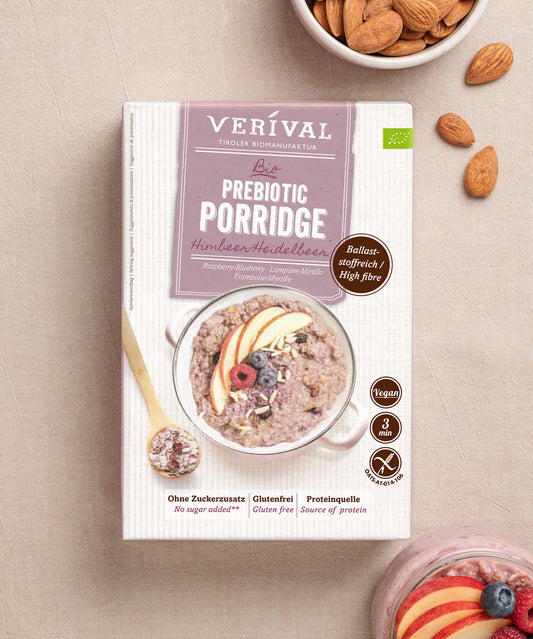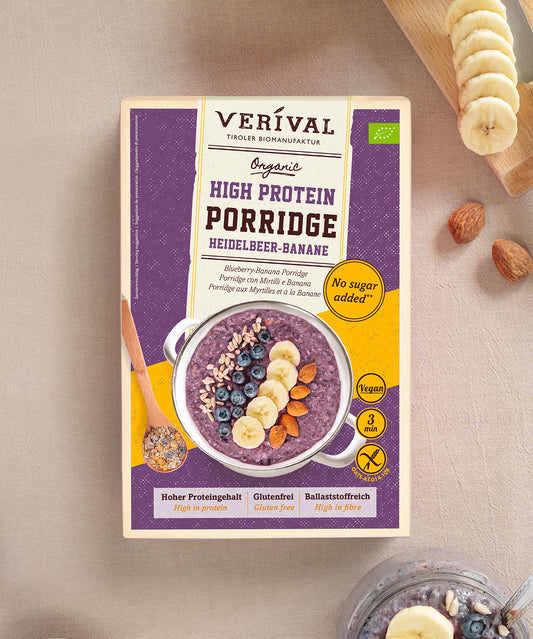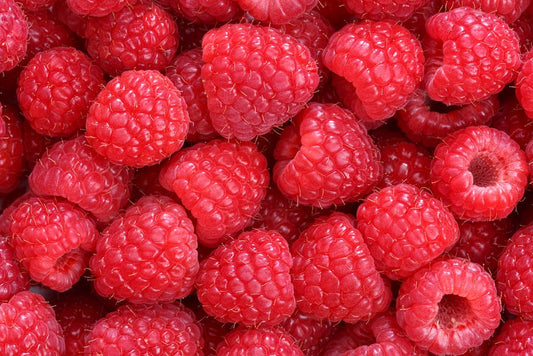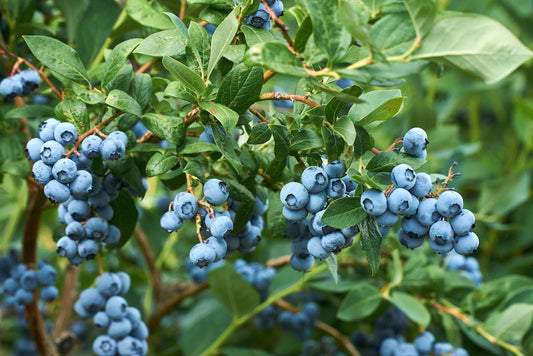The low-carb diet has become increasingly popular in recent years. In addition to the low-carbohydrate diet, there are also other forms or further developments, such as the slow-carb diet.
In this article, we will provide clarity about the different types, advantages and possible disadvantages. You will also learn which foods can be used to follow a low-carb approach at breakfast.
Discover low-carb breakfasts from Verival
What is low carb?
Before we take a closer look at the exact aspects of this diet, it is first necessary to clarify what exactly is meant by it!
Low carb is an abbreviation for “low carbohydrates” and refers to a diet in which attention is paid to a low consumption of carbohydrates.
While carbohydrates should generally make up 50-60% of the calories consumed, this percentage is significantly reduced with a low-carb diet. Depending on how strict the diet is, the percentage is estimated to be between 10%-40% carbohydrates of the total calories per day. To ensure that enough calories are still consumed, fat is used as an energy source.
At this point, you may be asking yourself: “What are carbohydrates anyway?” They are carbon compounds that consist of so-called chains. These chains can vary in length and carbohydrates are classified according to their length. Basically, carbohydrates consist of sugars, but that does not automatically mean that foods containing carbohydrates must taste sweet – it depends on the type.
The following table gives you an overview of the different types and their chain lengths.
| Sugars | |
|---|---|
| Simple sugars (monosaccharides) | |
| Grape sugar (glucose), fruit sugar (fructose) | |
| Double sugars (disaccharides) | Granulated sugar, lactose |
| Multiple sugars (oligosaccharides) | Maltodextrin |
| Multiple sugars (polysaccharides) | Starch, cellulose (component of fiber) |
Incidentally, low carb should not be confused with low calorie. A low-carbohydrate diet is not about cutting calories, but simply reducing carbohydrates.
These are the benefits of a low-carb diet
But what are the benefits of a low-carb diet? Proponents swear by the diet for weight loss. But even in the longer term, the diet is said to offer certain advantages:
One of the theories as to why a low-carb diet is preferable is based on the so-called “ Stone Age diet”. In those days, people ate little short-chain carbohydrates, but a lot of fat and protein, to have enough energy for hunting or gathering. It was only many years later, with the advent of agriculture, that our diet changed. It is assumed that even today, our bodies are still better adapted to the Stone Age diet.
Due to the increase in short-chain carbohydrates, blood sugar levels also rise sharply after a meal. This leads to energy fluctuations and is particularly dangerous for diabetics.
In addition, the increased intake of proteins and fats ensures a long-lasting feeling of satiety.
In addition, it is assumed that the body forms fewer fat reserves when the carbohydrate intake is reduced. Because if the carbohydrate stores are full, the body stores the excess energy in the form of fat.
Is a low-carb diet bad?
Now that you know about the advantages, you may wonder if there are any disadvantages at all. And the answer is yes.
Carbohydrates are valuable sources of fiber. These promote digestion, among other things, by serving as food for your intestinal bacteria, and also increase your feeling of satiety.
So if you cut out a large portion of your carbohydrates, you may end up consuming too little fiber and not being able to benefit from its advantages.
Because the low-carb approach involves the exchange of carbohydrates with fat, it is essential to pay attention to the source of the fat! In fact, if too much animal fat is consumed over a longer period of time, it can lead to higher mortality.
In addition, as with all unbalanced diets, a long-term low-carb diet can lead to malnutrition.
Slow Carb – the further development
You could translate slow carb directly as “slow” carbohydrates, but what is meant are the long-chain carbohydrates, i.e. the multiple and complex sugars. In contrast to low-carbs and according to the saying “quality before quantity”, the aim here is not to avoid carbohydrates altogether or to keep intake low. Rather, the focus is on the type of carbohydrates.
Long-chain carbohydrates are allowed here. That's why foods like legumes are particularly recommended.
In its original form, slow carb is a diet that should be followed for a certain period of time with the clear goal of weight loss, and not a general way of eating. Only a very limited number of foods can be eaten, and the body does not get all the nutrients it needs.
For this reason, this strict form of the slow carb diet is not recommended, or only after consulting your doctor.
However, it does have its advantages in the “milder” form, where long-chain carbohydrates are preferred.
The advantages of slow carbs
To understand the positive properties of slow carbs, we first need to look at what happens to them in the body:
Once they are absorbed into the body, they are broken down and then absorbed into the bloodstream. Depending on the length of the chains, this process takes different amounts of time. With long-chain carbohydrates, the body needs time to break them down. Consequently, the individual sugar particles are absorbed into the blood in smaller quantities and not as quickly. That's why blood sugar levels rise more slowly with foods that are high in fiber, and you stay full longer.
The glycemic index provides an overview of how carbohydrates affect blood sugar levels. The lower the glycemic index of a food, the slower the increase in blood sugar levels.
If you follow a slow-carb diet, you will also feel full faster. The fiber contained in oats, and thus the long carbohydrates, begin to swell and dissolve in the body. This enlarges your stomach in a positive way and you feel full.
Low-carb breakfast – How to make it a success
Breakfast is the most important meal of the day for most people. A healthy, balanced breakfast provides you with nutrients and gives you enough energy for the day!
So what would an ideal low-carb breakfast look like? Ideally, your breakfast should provide you with lots of plant-based fats, such as those found in flaxseed, nuts, chia seeds or avocados.
Verival has three products for you if you are following a low-carb diet! The oat-based Lower Carb Granola contains 60% less carbohydrates than comparable alternatives – and instead has almonds and sesame seeds.
Our Grain Free products give your breakfast the extra kick of proteins and healthy fatty acids due to the high proportion of valuable seeds and grains! The coconut flakes and figs also give your breakfast that little bit extra.
Discover Verival low-carb products here
Start the day with healthy carbohydrates
If you follow a low-carb diet, oats are particularly recommended. The high fiber content helps you feel full quickly and sustainably, giving you time to concentrate on your work.
Verival offers the right breakfast with oats for every taste: whether it's creamy porridge with fruit, muesli with ancient grains or crunchy granola – there's something for everyone! You will also find gluten-free products or breakfast products without added sugar in our range. This is the ideal way to follow the slow-carb approach.
A healthy slow carb recipe
Cooking with few carbohydrates doesn't have to be boring and difficult! Our low-carb pizza recipe is easy to make in just a few steps. And because oats also contain long-chain dietary fiber, this recipe is also good for those on a slow carb diet.
Have fun cooking!

Recipe: Sweet low carb breakfast pizza
Ingredients
Dough:
- 30g Verival Strawberry Chia Porridge (or shredded oatmeal)
- 30g Verival seed mix (optional: 20g flax seeds + 10g chia seeds)
- 30 g coconut oil or butter (liquid)
- 2 eggs (optional: 3-4 tbsp chia pudding)
- 1 tsp psyllium husks (ground)
Coating:
- 200 g Greek yogurt (optional: 100 g potatoes + 100 g natural yogurt)
- 200 g berries of your choice
- 30 g Verival Sport Muesli (optional: homemade low carb crispy muesli)
Preparation
-
Preheat the oven to 250°C and place the pizza stone in it right at the beginning to preheat it as well. Melt the fat in the oven.
-
Put the strawberry chia porridge and seed mix in a bowl and pour the liquid fat over it. Mix well and leave for 2-3 minutes.
-
In the next step, add the eggs and stir vigorously until everything is well mixed. Finally, fold in the psyllium husks.
-
Place a layer of parchment paper on a pizza lifter and grease it. Pour the dough on it and spread it as thinly as possible in the shape of your pizza stone (with me this is round). Now lift the dough onto the hot pizza stone with the pizza lifter and bake the pizza base for about 15 minutes at 230°C under heat until golden brown and crispy.
-
Then let the dough cool completely. Meanwhile, you can wash the berries of your choice and cut them into pieces. Once the dough is cold, spread the yogurt evenly over it and finally garnish with berries and cereal.
























